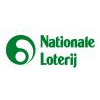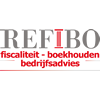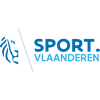In deze reeks volgen een aantal artikels die te maken hebben met 'mental coaching'.
Coach Information Supply (2010)
PROF. DR. MANFRED MUCKENHAUPT
Vertaling PUT KOEN, Katholieke Universiteit Leuven, Faculteit Beweging en Revalidatiewetenschappen (FaBeR)
ABSTRACT.
Het artikel 'Coach Information Supply' (informatievoorziening voor trainers/coaches) beschrijft langs welke kanalen trainers/coaches aan sportspecifieke informatie kunnen geraken. Via interviews, dagboekanalyses en surveys, werden 1571 Duitse trainers bevraagd naar de mate waarin zij toegang hebben tot de huidige beschikbare kanalen en vooral, welke mogelijke verbeteringen zij hieromtrent suggereren. Aangezien het gaat om een Engelstalig artikel, kan u hieronder een beknopte samenvatting in het Nederlands vinden.
Geraadpleegd 16 juni 2012;
Nederlandse vertaling
http://www.bloso.be/VlaamseTrainersschool/Documents/100101_KUL4_Coach%20...
Origineel Engels:
http://www.bisp.de/nn_16192/SharedDocs/Downloads/Praesentationen__Referate__Veranstaltungen/PK__Trainerprojekte__Infoversorgung__Englisch,templateId=raw,property=publicationFile.pdf/PK_Trainerprojekte_Infoversorgung_Englisch.pdf
Coach Profession Profile
_____________________________________________________________________
PROF. DR. HELMUT DIGEL / PROF. DR. ANSGAR THIEL (2010)
Vertaling PUT K. Katholieke Universiteit Leuven, Faculteit Bewegings- en Revalidatiewetenschappen (FaBeR)
ABSTRACT.
Het artikel 'Coach Profession Profile' schetst het beroepsprofiel van trainers/coaches die werkzaam zijn op het Olympisch niveau in Duitsland. Via vragenlijsten en interviews wordt er een beeld geschetst van de taken en verantwoordelijkheden van deze trainers/coaches en vooral, onder welke omstandigheden zij hun beroep uitoefenen. Hoewel het een Duits artikel betreft, zullen de Vlaamse (top)trainers gelijkenissen ontdekken met hun beroepsprofiel.
Aangezien het gaat om een Engelstalig artikel, kun u hieronder een beknopte samenvatting in het Nederlands vinden.
Geraadpleegd: 16 juni 2012.
http://www.bloso.be/VlaamseTrainersschool/Documents/100401_KUL5_CoachPro...
_____________________________________________________________________
De trainer/coach als angstmanager (2011)
Auteur: DE CUYPER B. redacteur: HANNOSSET S.
Katholieke Universiteit Leuven, Faculteit Bewegings- en Revalidatiewetenschappen (FaBeR)
ABSTRACT:
Prestatievermindering door angst is een vaak voorkomend verschijnsel in de sportwereld. Een trainer/coach kan een belangrijke rol spelen in het angstniveau van zijn pupil, op voorwaarde dat er een open communicatieklimaat bestaat tussen beiden. In dit artikel worden twee adviezen gegeven voor de trainer/coach om prestatiesporters tot hun optimaal angstniveau te brengen.
Geraadpleegd 16 juni 2012
https://www.sport.vlaanderen/media/1163/110401_kul9_de-trainer-coach-als-angst-manager.pdf
_____________________________________________________________________
Kan en mag de coach ook zeggen dat het NIET goed is?
Het belang van corrigerende feedback op het rechtvaardigheidsgevoel (en de zelfsturing) van de spelers
MEYLEMANS S., DRS. DE BACKER M., PROF. DR. VANDE BROEK
Katholieke Universiteit Leuven, Faculteit Bewegings en Revalidatiewetenschappen
(FaBeR)
ABSTRACT:
Spelers die zich rechtvaardig behandeld voelen door hun coach, voelen zich sterker verbonden met het team en vertonen meer inzet. Aangezien beide factoren prestatiebepalend zijn binnen sportteams, lijkt het ons aangewezen om te onderzoeken welke coachkarakteristieken dit gevoel van rechtvaardigheid beïnvloeden.
We verwachten dat zowel het communiceren van corrigerende feedback als de mate van transparantie belangrijke predictoren zijn van het rechtvaardigheidsgevoel van spelers in teamsporten. De resultaten tonen aan dat de manier waarop de coach de corrigerende feedback communiceert bepalend is voor het gevoel van rechtvaardigheid. Een coach die ervoor zorgt dat zijn spelers meer inzicht krijgen in zijn beslissingen, komt rechtvaardiger over dan een coach die enkel op de fouten wijst. Verder kunnen we besluiten dat ook transparantie een positieve invloed heeft op het rechtvaardigheidsgevoel van spelers. Coaches kunnen gebaseerd op deze wetenschappelijke inzichten, hun manier van communiceren optimaliseren en zo meer rendement halen uit hun team.
Geraadpleegd 16 juni 2012.
https://www.sport.vlaanderen/media/1168/120101_kul12_kan-en-mag-de-coach-ook-zeggen-dat-het-niet-goed-is.pdf
_____________________________________________________________________
Omgaan met negatieve feedback/kritiek (2009).
Auteur: DE CUYPER B., redacteur: PUT K. Katholieke Universiteit Leuven, Faculteit Bewegings- en Revalidatiewetenschappen
(FaBeR).
ABSTRACT
Iedere trainer hanteert een eigen manier van werken om vooropgestelde doelstellingen met zijn atleten/spelers/ploeg te bereiken. Bovendien gelooft ieder van die trainers dat „zijn‟ werkwijze de meeste kansen op succes biedt. Kritiek van spelers, bestuur, ouders, buitenstaanders,... op deze methode komt dan ook hard aan voor de coach. Hij moet daarmee leren omgaan: de negatieve feedback plaatsen en hierop gepast reageren. In dit artikel wordt een beknopt overzicht gegeven over de wijze waarop de coach met deze negatieve feedback het best kan omgaan, namelijk exploreren, reageren en concluderen.
Geraadpleegd 16 juni 2012.
https://www.sport.vlaanderen/media/1134/090602_kul2_omgaan-met-negatieve-feedback-kritiek.pdf-
_____________________________________________________________________
Doelen stellen en bereiken
Jeroen Meganck, Katholieke Universiteit Leuven, Faculteit Bewegings en Revalidatiewetenschappen, (FaBeR)
Sport draait bij uitstek om het bereiken van doelen: een gouden medaille op het EK, lid worden van het nationale team,... Elke atleet probeert verschillende dingen te bereiken tijdens zijn of haar carrière en zijn of haar leven.
Voor vele atleten en coaches is winnen het enige doel dat telt, en inderdaad is competitie de essentie van topsport. Maar aan de andere kant heeft een eenzijdige focus op winnen vaak ook een negatieve gevolg: het plezier in het sporten op zich gaat verloren. Het is misschien ironisch, maar een te grote nadruk op winnen kan er net voor zorgen dat je verliest!
Voor velen is het stellen van doelen te vanzelfsprekend om er tijd aan te besteden. Weinigen zijn dan ook bewust bezig met voor zichzelf goede doelen te stellen en uit te stippelen hoe ze deze willen bereiken. Toch zijn er vele redenen om dit wel te doen:
Geraadpleegd 16 juni 2012-06-16
http://www.spoc.be/tekst/Doelen%20stellen.pdf
_____________________________________________________________________
Motivatie verhogen
Jeroen Meganck, Katholieke Universiteit Leuven, Faculteit Bewegings en Revalidatiewetenschappen, (FaBeR)
Inleiding:
Spanning is een woord dat meestal negatief bekeken wordt. Het wordt dan gezien als stress of faalangst. Toch is dit niet correct. Er zijn heel wat voorbeelden te vinden waarbij spanning juist een aangenaam gevoel is, bijvoorbeeld verliefdheid; soms wordt het zelfs specifiek nagestreefd, zoals de kick van benji-jumping. Zonder spanning zou het leven vaak maar een saaie bedoening zijn.
Ook binnen de sport is spanning erg belangrijk: zonder een bepaald niveau van spanning heeft een atleet niet de energie, niet de interesse om zichzelf maximaal te geven en zijn grenzen te verleggen. Zonder spanning is er geen motivatie.
Geraadpleegd 16 juni 2012.
http://www.spoc.be/tekst/Motivatie%20verhogen.pdf
_____________________________________________________________________
Coach Education and Continuing Professional Development: Experience and Learning to Coach (2003)
Christopher J. Cushion, Kathy M. Armour, and Robyn L. Jones
QUEST, 2003, 55, 215-23, COACH EDUCATION © 2003 National Association for Physical Education in Higher Education
Abstract:
Research over the last decade has demonstrated that it is experience and the observation of other coaches that remain the primary sources of knowledge for coaches. Despite this, coach education and continuing professional development fail to draw effectively on this experience. Using the work of Pierre Bourdieu, this paper attempts to understand how the "art of coaching" can be characterized as structured improvisation and how experience is crucial to structuring coaching practice. An examination of current coach education and assessment demonstrates that coaching practice viewed as a composite of knowledge has not specifically addressed the pervasive influence of experience on coaching practice. Drawing on experiences from the educational field, we examine how coach education and continuing professional development can utilize mentoring and critical reflection to situate learning in the practical experience of coaching.
Geraadpleegd 16 juni 2012.
http://www.coach.ca/files/Cushion,_Armour,__Jones_2003.pdf
_____________________________________________________________________
Vermoeidheidsmanagement en recuperatiestrategieën
Auteurs: DR. CATTEEUW P. & PROBST S.
Redacteur: HANNOSSET S.
Katholieke Universiteit Leuven, Faculteit Bewegings en Revalidatiewetenschappen (FaBeR)
Abstract:
Om topprestaties te leveren, moet een atleet hard trainen. Dit moet verstandig aangepakt worden, met voldoende aandacht voor rust en aangepaste training. Dit artikel bespreekt hoe een atleet het best omgaat met vermoeidheid en recuperatie om optimaal te presteren tijdens training en wedstrijd. Drie recuperatiestrategieën worden toegelicht en enkele tips worden gegeven aan de trainer om recuperatie en herstel te bevorderen bij de sporters.
Geraadpleegd 16 juni 2012.
https://www.sport.vlaanderen/media/1169/110701_kul10_vermoeidheidsmanagement-en-recuperatiestrategie%C3%ABn.pdf
_____________________________________________________________________
De coach als communicator.
John Volkers.
De goede coach hoort, volgens de methode-Murphy, naast al zijn andere vaardigheden vooral thuis te zijn in de mentale processen. Je beïnvloedt die door te communiceren en daarmee treedt de coach in de rol van communicator, eigenlijk zijn voornaamste rol in het sportleven.
Coach nr. 5, pp. 16-17.
Geraadpleegd op 22 juni 2012.
http://www.actiontype.nl/pdf-bestanden/Masterclass_deel05.pdf
_________________________________________________________________
Coachen is vragen stellen.
John Volkers.
Als de trainer door persoonlijke ontwikkeling een supertrainer is geworden en zich met andere dan technische facetten gaat bezighouden, dan wordt hij (of zij) gaandeweg de coach die zich met mentale, psychologische, tactische en communicatieve aspecten van de sport gaat bezighouden. Er ligt een wereld van verschil tussen trainer zijn en coach wezen. Er zijn evenwel factoren om je persoonlijke ontwikkeling tot coach snel te bevorderen.
Coach nr.4, pp. 14-15.
Geraadpleegd op 22 juni 2012.
http://www.actiontype.nl/pdf-bestanden/Masterclass_deel04.pdf
_____________________________________________________________________
Coaching Process.
Lesson 8: Types of Feedback and Delivering Feedback.
The essence of the coaching processis to instigate observable changes in behaviour.
Feedback is a crucial element of the coaching process.
Een overzicht, in het Engels, van wat Coaching en Feedback is en zou moeten zijn. In 27 slides. Is niet typisch voor zeilen, maar is wetenschappelijk goed onderbouwd. Bruikbaar!
Geraadpleegd op 22 juni 2012.
http://www.scribd.com/doc/9633006/NA-Lesson-2-Feedback











